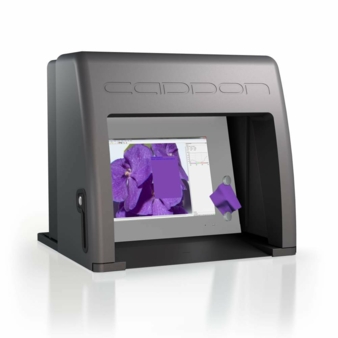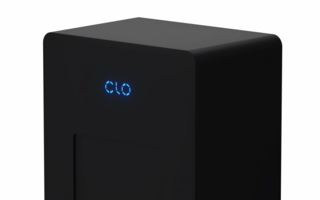12/07/2017 — auf Deutsch lesen
Brilliant Color Measurement
Since 2008, caddon has the patent for a new form of color measurement with which it manufactures products that are revolutionizing color recognition.
To date smolderes a permanent conflict between visual assessment, which is essential for designers and spectral measurements as evidence for accurate reproduction of colors in production. This is due to the problem, that a spectral measurement represents the physical remission value of a single color only, but not the human impression of a combination of colors in a design. Our technology links visual impression of colors with spectral evidence using a tamper proof dataset” says Michael Nothelfer, managing director of caddon printing & imaging GmbH
caddon – technology leader for digital color measurement
From the textile industry to furniture manufacturing, automotive design and packaging technology – rendering colors exactly has a major impact on product quality in numerous industries. Thanks to the new technology from caddon printing & imaging GmbH, one can now exchange color-true samples digitally. Caddon’s system consists of four parts. The can:scan scanner measures the colors, the can:view viewing station optimally represents each color under different lighting conditions, the can:connect software connects all the hardware components and the can:change Photoshop plug-in enables the user to transmit calculated color values quickly and easily.
Color-true digital samples in under a minute
caddon’s multispectral measuring device, can:scan, quite simply outperforms conventional scanning devices. For the first time ever, it calculates complex color patterns and structured surfaces, for example of fabrics, synthetic materials or wood, delivering color-true digital samples within 55 seconds. The camera photographs each colored object through 16 filters, each of which only lets through the defined wavelengths reflected by the object’s light. The software then uses these photographs to calculate the exact spectral values of the colored object, pixel for pixel. This allows can:scan to capture objects and samples with particularly detailed and complex patterns. Spectrophotometers cannot measure this level of detail as they only measure the average of a color surface’s spectra within its measurement field. Pictures taken by modern digital cameras have good spatial resolution, but they are not color-true. Conventional color-measuring devices provide reliable spectral values from single-color, unstructured surfaces, but they do not take into account spatial or locally resolved effects. can:scan marries the advantages of both systems. The multispectral scanner can also photograph large, three-dimensional pieces, capturing every detail, as well as color nuances caused by light and shadows.
Getting the color right
Lighting conditions are crucial when judging colors. For example, the color tone of an item of clothing by daylight can differ greatly when displayed under a department store’s neon light. The viewing station, can:view, takes this so-called “metameral behavior” into account. It consists of two optimally synchronized components: a light box and a monitor. The light box provides different standard light sources and recalculates each spectral value of the digital sample. This means light from the normal light source is incorporated when rendering the image on the screen. The process also enables an intuitive and ergonomic working style. The user simply places the colored object directly on the monitor and compares it with the sample rendered virtually. Conventional color measuring devices fail here as they do not account for the influence of the monitor’s self-lighting effect or the impact of normal light on the original. The monitor in the can:view system captures digital pictures perfectly. Pictures taken with a multispectral camera are particularly color-true - identical to the original - on the screen. Manufacturers can therefore compare the original directly on the monitor with the digital sample and judge it error-free under highly-diverse lighting situations.
Integration through software
The can:connect software drives the can:scan and can:view components and enables the user to analyze the multispectral datasets, compare them, and produce measurement protocols. The software presents the spectral information for every pixel of the surface that was measured. The software uses this information to visually reproduce the measured object’s metameral behavior and reproduces it visually under the light conditions defined on the computer. caddon has also developed the can:change Photoshop plug-in which allows photographs to be corrected objectively and precisely. This is achieved by measuring all the chromaticity coordinates from the digital sample and transferring them to the photograph of the original.





